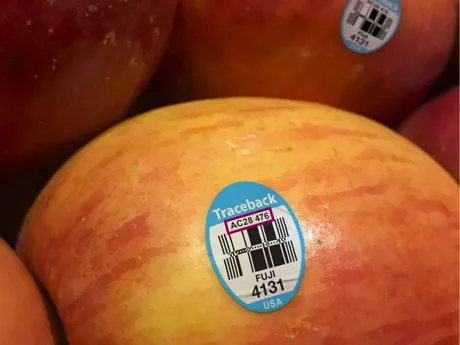Food recalls have been an issue over the past few years, affecting a number of different produce items. Media coverage on contaminated foods causing illness has diminished consumer confidence in food and the retailers where they purchased the recalled products. To increase consumer confidence and public safety, a labeling company says it’s necessary to have an effective traceability system in place. Hurst International said it has made item-level traceability available through its patented Print on Demand (POD) Versaprint labeling system.
Full traceability is only a requirement on the outside of a case of produce. But consumers don’t buy an entire case of produce; they purchase it individually as a bulk item. Once the case is emptied at the retailer’s shelves and bins, all further traceability is lost, according to Hurst. The company says its POD Versaprint labeling system can add an additional traceability code on each price look up (PLU) label. The PLU label is added to all bulk produce items. By adding this additional traceability code, each produce item can be traced back to its origin. The labeling system can also be used to announce sales events or promotions reaching the consumers when they purchase a produce item at the store level.

The item-level traceability code tracks the individual piece of fruit or vegetable throughout the entire supply chain. The traceability codes include: lot numbers; grower codes; dates; julian dates; time stamps; packing house locations, packing lines and production. By identifying the origin of each produce item, the grower/shipper/packer can determine where the fruit or vegetable was at any given date and track the process to see who came into contact with it. This allows the ability to trace the product quickly, helping to eliminate additional foodborne illnesses. Moreover, beyond the financial implications of recalls, unaffected produce would not need to be destroyed, which further diminishes retailer profits. Information included in the PLU label can also be added to a blockchain distributed ledger to be effectively traced back throughout the supply chain.
Hurst says the POD system is efficient and easy to use. The company cites several companies in the citrus, apple, pear, stone fruit, avocado, pomegranate, and kiwi industries use it. The Direct Thermal Printing technology allows packers to label up to 63 different graphics at speeds up to 15 fruits per second. The company added that the application rates of over 95 percent reduces production costs, in turn saving money on labeling. Because the flexible system can print a variation of changing numbers and grow codes on the label, some Hurst customers use this feature for internal control and management. It can be used not only to identify an event that occurred in the field when farming, but also helps identify any mechanical issues or inconsistencies in the packing house or supply chain, the company concluded.
For more information:
Alex Lichtenberg
Hurst International
Ph: +1 (310) 383-8548
alex@hurstinternational.net
www.hurst-international.com
